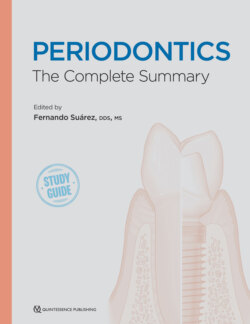Читать книгу Periodontics - Fernando Suarez - Страница 113
OPEN INTERPROXIMAL CONTACTS
ОглавлениеThe link between open contacts and periodontal breakdown has been a topic of debate. Open contacts can be measured by the visual assessment224 or through the resistance of dental floss within the interproximal embrasure.225 Jernberg et al used a constructed gauge consisting of calibrated metal strips 0.1 mm thick.224 Interestingly, O’Leary et al chose a more practical assessment by using dental floss between the interproximal embrasure and classified into them tight (definitive resistance to floss), loose (minimal resistant to floss), or open contacts (no resistance to floss).225
Despite the inability of early studies to find a direct correlation between open contacts and periodontal destruction,226–228 one classic study found that open contacts were directly related to food impaction, which in turn was significantly related to increased probing depths.229 However, there was no significant relationship between contact type and periodontal pocket depth. It should be noted that the subjects in that study had 80% of sites with moderate to severe gingival inflammation, indicating poor oral hygiene. This finding was confirmed in a cross-sectional study in a group of 104 subjects with 75% of anterior open contacts, demonstrating that food impaction was more frequent in open contacts (18.3%) than closed contacts (2.9%).224
As a consequence of open contacts, plunger cusps may actively pass food into the embrasure area, causing food impaction.11 Hence, more plaque accumulation is expected when plunger cusps are present, and thus adequate and frequent plaque removal is paramount to maintain periodontal integrity within embrasure areas.230 It is also important to bear in mind that teeth requiring extraction with adjacent open contacts had significantly more attachment loss than sites with closed contacts.231
